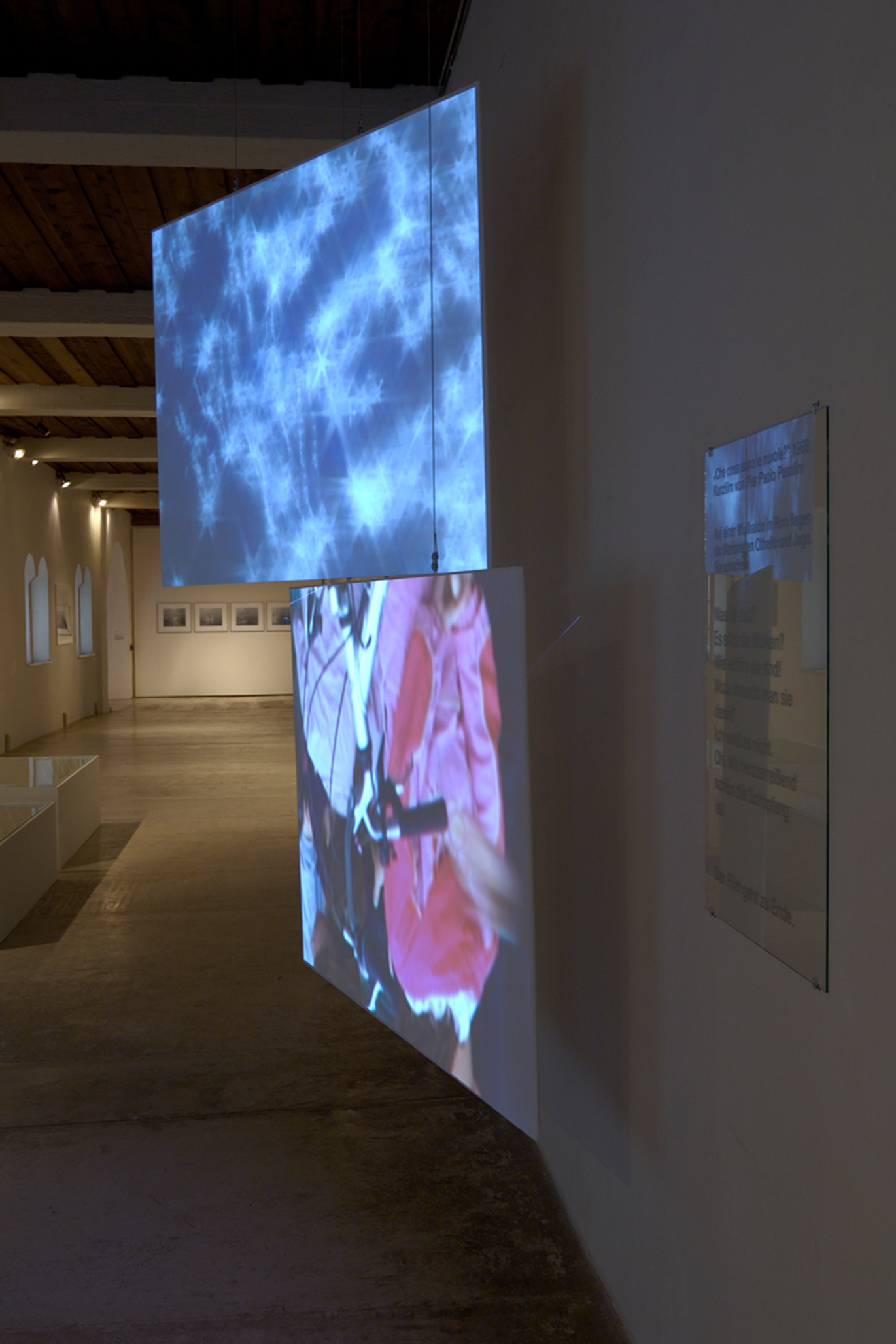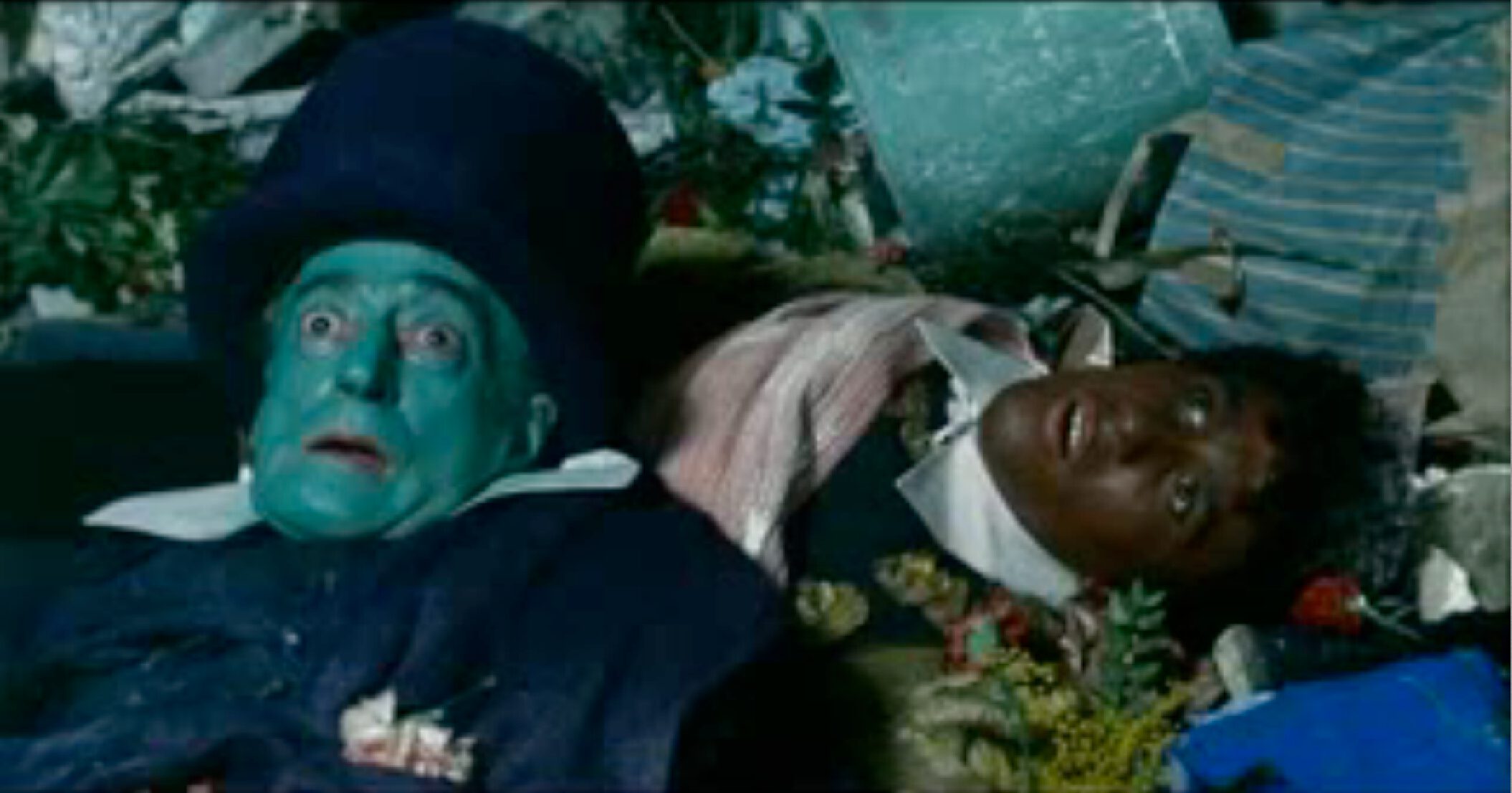
Elben sehen Wolken
two-channel-videoinstallation, endless
WV 2007-02-01
Signed certificate
Ausstellung: Die Elbe [in]between
Wasser.Ströme.Zeiten
Gruppenausstellung
Kunstmuseum Kloster Unser Lieben Frauen Magdeburg
22.09.07 bis 20.01.08
ELBEN (sehen Wolken)
2007/08
2-Kanal-Videoinstallation / DVD: Farbe, ohne Ton, Loops, 11:28 und 59:28 min,
Glasscheibe mit Text
Die zwei Videoprojektionen und der auf einer Glastafelformulierte Texte bilden eine genau erwogene Ordnung im Raum, die jeden teil separat belässt, aber gleichzeitig in gegenseitige Verbindung stellt. Hervorgegangen aus den persönlichen Eindrücken zahlreicher Aufenthalte am Fluss im Laufe eines Jahres und aus Gedanken über die visuelle Faszination und Symbolik des Elbestroms, eröffnet die Installation mehrere Blickachsen und Bedeutungsebenen, die sich gegenseitig spiegeln. Eine der Projektionen besteht aus vielen einminütigen Filmsequenzen von der Wasseroberfläche, diese sind in ein enges Kamerafenster gerückt, das unablässig strömende Wellenmuster und Farben, überlagert von Lichtreflexen, zeigt. Die Blickrichtung, vertikal auf die Elbe, steht dem umgekehrten Blick aus dem Fluss heraus, auf die Menschen am Ufer, entgegen, welche die Sequenzen der zweiten Projektion zeigen, die unterhalb der ersten seitlich verschoben installiert ist. Auf den Kopf gestellt ergibt sich ein ungewöhnlicher Perspektivwechsel auf das alltägliche Treiben der Menschen im Uferbereich. In Nahsicht, die Zeit verlangsamt, fließen alle Bewegungen der Passanten filmisch. Beide Videos laufen in asynchronen Loops, wodurch die gegenseitigen Berührungspunkte unvorhersehbar wechseln. Ein Text, der dritte Bestandteil der Installation, verwandelt die Beobachtungen der Elbe zu Instrumenten einer vertieften Wahrnehmung und Verständigung über die Natur. Der kurze Text entstammt der Schlusspassage eines Kurzfilms von Pier Paolo Pasolini von 1968, „Che cosa sono le nuvole?“: Die Marionetten Othello und Jago liegen weggeworfen auf dem Rücken, unbeweglich zwar, aber nicht mehr von fremder Hand gelenkt an Fäden hängend, entdecken sie plötzlich die Natur. Ihre Worte überlagern die beiden ohne Ton laufenden Projektionen wie ein inneres Geräusch. Sollten sich im Spiegel des Wassers nicht nur die Bilder sondern auch die Gedanken und Träume brechen? Der pictural turn strukturiert die fließenden Formen, in dem sich die reflexiven Aspekte aus Bild und Text ausdehnen können. (Auszug Katalogtext)
„Che cosa sono le nuvole?“, 1968, Kurzfilm von Pier Paolo Pasolini
Auf einer Müllhalde in Rom liegen die Marionetten Othello und Jago.
Sie sprechen:
Was ist das?
Es sind die Wolken.
Wie schön sie sind!
Wozu braucht man sie denn?
Ich weiß es nicht.
Oh, wie herzzerreißend schön die Schöpfung ist!
Der Film geht zu Ende.
The Elbe [in]between
Water.Currents.Times
Group exhibition
Art Museum Kloster Unser Lieben Frauen Magdeburg/Germany
September 22, 2007 – January 20, 2008
ELBEN (sehen Wolken) [ELBEN (see clouds)]
2007/08
2-channel-video installation/DVD: color, wihtout sound, loops, 11:28 and 59:28 min.,
glas panel with text
The two video projections and the text formulated on a glass panel set up an order in the room thoroughly considered, which leaves each of the two parts separately, however, simultaneously puts both in a mutual conflation. Resulted from personal impressions of numerous stays at the river in the course of a year and from thoughts on the visual fascination and symbolism of the Elbe current, the installation opens several perspectives and meaning levels which reflect each other. One of the projections consists of various one-minute film sequences of the water surface, these have been moved into a narrow camera window, showing continually streaming wave patterns and colors, overlaid by light reflexes. The viewing direction, vertical at the Elbe, is opposed to the reversed look out of the river at the people on shore, who show the sequences of the second projection that is installed sidewards below the first one. Put on the head like that an unusual change of perspective on the everyday hustle and bustle of the people on the shore area arises. In close-up, time slowed down, all movements of the passers-by flow cinematically. Both videos play in asynchronous loops, changing the mutual contact points in an unpredictably way. A text, the third component of the installation, transforms the observations of the Elbe into tools of an extened perception and communication over nature. The short text originates from the final passage of a shortfilm by Pier Paolo Pasolini of 1968, „Che cosa sono le nuvole?”: The marionettes Othello and Jago lie on the back, thrown away and motionless, hanging on threads though not steered by a strange hand any more they suddenly discover nature. Their words overlay the two projections playing without sound just like an inner noise. Should not only the pictures but also the thoughts and dreams refract in the mirror of the water? The pictural turn structures the floating forms as the reflexive aspects from picture and text may extend. (Extract catalogue text)
„Che cosa sono le nuvole?“, 1968, shortfilm by Pier Paolo Pasolini
In Rome, on a garbage dump, lie the marionettes Othello and Jago.
They speak:
What is this?
That are the clouds.
How beautiful they are!
What for does one need them?
I do not know.
Oh, how heartbreaking beautiful is creation!
The film comes to an end.
